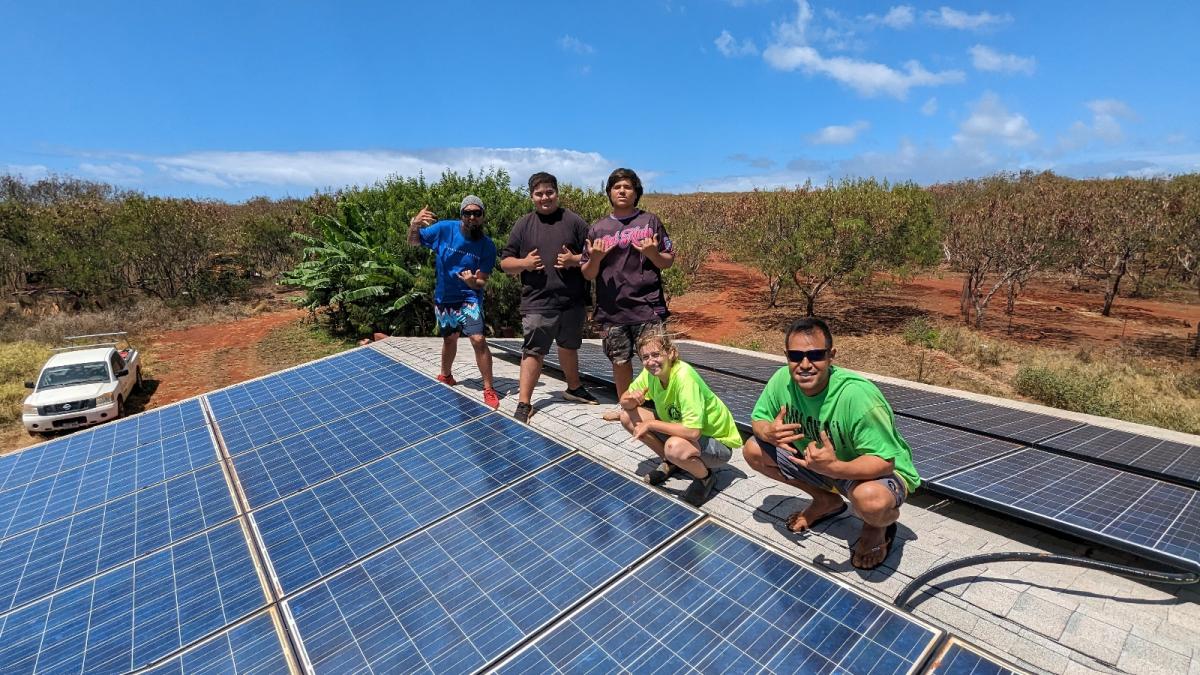Like many homesteaders on the island of Molokaʻi, Kailana Place grew up off-grid, on 40 acres of family land designated for Native Hawaiians. Living in repurposed school buses surrounded by fields of red volcanic clay and kiawe trees “was a glamping lifestyle,” joked the social worker and mother of three, a way of life powered by kerosene and propane.
Three years ago, those fuels sparked a devastating fire. Neighbors helped Place and her husband, Ikaika, build a new house with rooftop solar and a battery. Even now, the buzz of constant, reliable power has yet to wear off. Beyond ensuring continuous internet access and a freezer for fish and venison — most residents depend upon subsistence fishing, hunting, and farming — their asthmatic son no longer relies on a generator to power his inhaler. “It’s unreal,” said Ikaika Place. “My wife has never had a house where she could just switch on the lights.”
It’s been a radical change. When it comes to electricity, residents of Molokaʻi get by with as little as possible. Consumption rates on this rural island are the lowe... Read more


